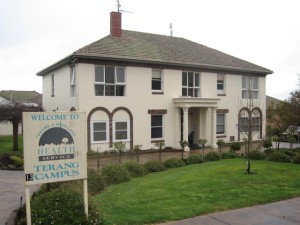April 2011
A pilot study of the prevalence of cardiac risk factors in a group of agricultural workers and of their decision-making abilities with regard to when and how they would seek help when experiencing chest pain has found that most put themselves at risk of dying.
Dr Tim Baker, from the Centre for Rural Emergency Medicine at Deakin University School of Medicine, and Scott McCombe, Cate Mercer-Grant, and Susan Brumby, from the National Centre for Farmer Health at Deakin University School of Medicine and Western District Health Service, studied almost 200 farm men and women recruited from 20 rural Victorian sites.
Their study is published as an Early View article in Emergency Medicine Australasia, the journal of the Australasian College for Emergency Medicine.
The farmers underwent health assessments for total cholesterol, blood glucose, weight, height and blood pressure, and they completed a survey to determine their knowledge of chest pain treatment, local emergency services, and likely response to chest pain.
Each year in regional Australia approximately 9000 people die of coronary artery disease, with acute myocardial infarction accounting for approximately half of these deaths.
Nine hundred of these lives would be saved if mortality rates in regional areas were the same as those in metropolitan areas.
Delays in initiating treatment for acute cardiac events in rural areas might also contribute.
Treatment in the first two hours following a myocardial infarction can decrease mortality by half. Also, one in four people who experience a myocardial infarction die from cardiac arrest within one hour of their first chest pain.
Farmers and non-town dwellers are often thought to be the slowest rural Australians to seek emergency medical treatment.
Reasons given include the poorly defined and stereotypical concept of stoicism and an apparent fatalistic acceptance of supposed outcomes.
In this study, the researchers found 61% of the farmers had cardiac risk factors, with 61% of men and 74% of women either overweight or obese.
When asked to name their nearest ED, 10% of participants nominated health services or towns where no ED exists.
And 67% of respondents believed it was safe to travel to hospital by car while potentially having a myocardial infarction.
“This group of agricultural workers were at considerable risk of experiencing acute coronary events, but many would make decisions about when and how to seek medical help for chest pain that are at odds with published community guidelines,” the researchers concluded.
The researchers said a close relationship with a general practitioner remains the cornerstone of good rural health care, but contacting or visiting a local doctor at their clinic is not recommended when a patient has chest pain.
“Despite this group’s beliefs to the contrary, acute coronary syndrome can seldom be excluded in a clinic setting, and it has been shown to delay hospital presentation by at least one hour.
“In the present study, it appears that many farmers saw being driven to hospital as an acceptable alternative to calling the ambulance. Many reasons have been suggested for the reluctance of rural people to use ambulance services.
“Most rural people can recall an anecdote, from word of mouth or the media, where the use of an ambulance service was said to result in a poor health outcome.
“ There is a widespread belief that travelling by car is quicker and thus safer.
“One participant wrote on their questionnaire that it was ‘sometimes quicker to drive to hospital rather than get an ambulance’. Although the wait at home might be shorter in this scenario, the time to care, which is the most important factor, has been shown to be longer on average.
“Calling the ambulance also provides immediate telephone advice and activates the emergency medical system.
“Paramedics also have the ability to defibrillate once on the scene. From our group, it is not difficult to foresee a tragedy when someone travels by car for 30 minues to an ED where the doctor is unavailable or, even worse, to a town without an ED.”
Improving health literacy among farm men and women is of the utmost importance as they have higher rates of clinical risk factors and appear to be lagging in emergency knowledge and services when compared with their urban and regional counterparts, the researchers maintain.
“Farmers are generally the most remotely located within a population and would achieve greater benefit from acting rapidly in response to acute myocardial events and other medical emergencies.
“Programmes addressing behavioural barriers to accessing care and improving emergency decision making within the farming cohort might be readily translatable into rural lives saved.”
FURTHER INFORMATION:
Dr Tim Baker, phone 03 55633500, 0400 902 758
Australasian College for Emergency Medicine, phone 03 9320 0444
Issued for the Australasian College for Emergency Medicine by Marilyn Bitomsky, Impact Promotions & Publications, phone 07 3371 3057 or 0412 884 114. Media please note: I am overseas for a couple of weeks so if you need assistance, please contact Kerry Reeves, 07 3882 1068, 0407 036 791, kreeves@bytesite.com.au.

